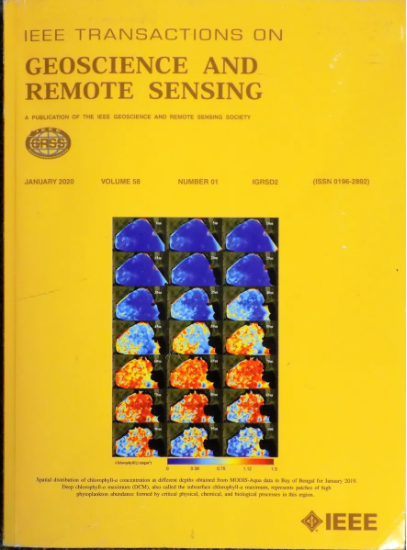TLSLeaf:基于TLS点云的阔叶叶数和面积的无监督实例分割
IF 8.6
1区 地球科学
Q1 ENGINEERING, ELECTRICAL & ELECTRONIC
IEEE Transactions on Geoscience and Remote Sensing
Pub Date : 2025-01-20
DOI:10.1109/TGRS.2025.3531891
引用次数: 0
摘要
地面激光扫描(TLS)已经彻底改变了树级测量,实现了精确的树干和树枝分析,但它在阔叶树的单叶计数和测量方面面临挑战。我们介绍了TLSLeaf,一种创新的方法,旨在准确测量叶数和面积,专门为复杂的树冠量身定制。TLSLeaf通过四步过程解决了基于tls的叶片分析中的关键空白:1)木叶分离;2)单叶分割;3)残叶检测与修复;4)叶片计数和面积测量。TLSLeaf结合图论和最短路径算法进行有效的枝叶分离,然后使用相似图进行实例分割。为了克服TLS树冠遮挡和叶片扫描不完美的难题,基于对称和凹凸原理对不完整叶片进行检测和修复。通过现场扫描、原位测量和破坏性采样验证了TLSLeaf的准确性。TLSLeaf对叶数(201 ~ 4000片)的误差为1.49% ~ 8.60%,对叶面积(9.98 ~ 179.77 cm2)的RMSE为5.87 cm2, R^{2}$为0.95。TLSLeaf通过无监督框架集成了语义和实例分割,提供了一种“白盒”方法,确保了透明度和可重复性。TLSLeaf在TLS点云的叶片级分析方面取得了重大进展,在增强树木重建、三维辐射传输建模和冠层光合作用方面具有潜在的应用前景。本文章由计算机程序翻译,如有差异,请以英文原文为准。
TLSLeaf: Unsupervised Instance Segmentation of Broadleaf Leaf Count and Area From TLS Point Clouds
Terrestrial laser scanning (TLS) has revolutionized tree-level measurement, enabling accurate trunk, and branch analysis, but it faces challenges in counting and measuring individual leaves in broad-leaved trees. We introduce TLSLeaf, an innovative method designed to accurately measure leaf count and area, specifically tailored for complex tree canopies. TLSLeaf addresses critical gaps in TLS-based leaf analysis through a four-step process: 1) wood-leaf separation; 2) individual leaf segmentation; 3) detection and repair of incomplete leaves; and 4) leaf counting and area measurement. TLSLeaf integrates graph theory and shortest-path algorithms for effective branch-leaf separation, followed by instance segmentation using a similarity graph. To overcome the challenge of TLS canopy occlusion and imperfect leaf scans, incomplete leaves are detected and repaired based on symmetry and concavity principles. TLSLeaf’s accuracy was validated through field scanning, in situ measurements, and destructive sampling. TLSLeaf showed a percentage error of 1.49%–8.60% for leaf counts (ranging from 201 to 4000 leaves) and achieved an $R^{2}$ of 0.95 and RMSE of 5.87 cm2 for leaf areas (ranging from 9.98 to 179.77 cm2). TLSLeaf integrates semantic and instance segmentation through an unsupervised framework, presenting a “white-box” approach that ensures transparency and reproducibility. TLSLeaf represents a significant advancement in leaf-level analysis of TLS point clouds, with potential applications in enhancing tree reconstruction, 3-D radiative transfer modeling, and canopy photosynthesis.
求助全文
通过发布文献求助,成功后即可免费获取论文全文。
去求助
来源期刊

IEEE Transactions on Geoscience and Remote Sensing
工程技术-地球化学与地球物理
CiteScore
11.50
自引率
28.00%
发文量
1912
审稿时长
4.0 months
期刊介绍:
IEEE Transactions on Geoscience and Remote Sensing (TGRS) is a monthly publication that focuses on the theory, concepts, and techniques of science and engineering as applied to sensing the land, oceans, atmosphere, and space; and the processing, interpretation, and dissemination of this information.
 求助内容:
求助内容: 应助结果提醒方式:
应助结果提醒方式:


